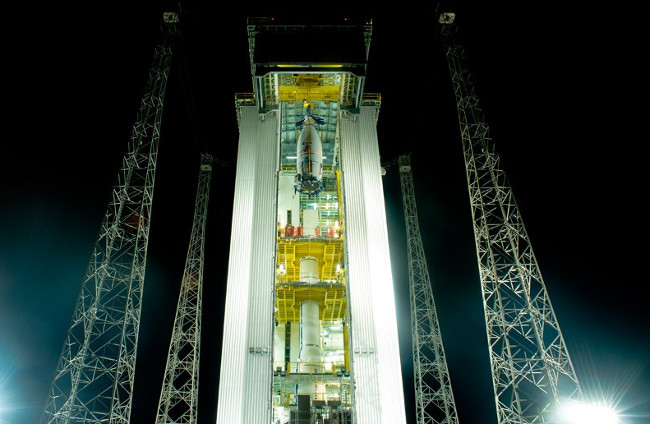Launching a spacecraft helps test Einstein's hypothesis
On the next December 2, a spacecraft will be launched by the European Aeronautics Agency (ESA) in the LISA mission, carrying equipment designed to detect gravitational waves - what Albert Einstein 100 years ago predicted its existence and until now has not been directly observed for verification.
The exercise defines Einstein's hypothesis
Known in the upcoming LISA mission , scientists will first use the technologies they developed before to observe gravitational waves . And in fact, this is actually a rehearsal for the larger-scale eLISA mission expected to be deployed in 2034 with the ambition of completely changing the face of astronomical science, allowing us to Observing both the cosmic parts does not emit electromagnetic radiation.
It has been 100 years since Albert Einstein introduced the theory of general relativity to describe spacetime as a unified, curved structure by the presence of matter and radiation within it. So far, under many verification studies by many physicists, most have been verified but there are still unconfirmed ones and among them are gravitational waves. According to him, the motion of giant objects will change the curvature of spacetime and create gravitational waves in the cosmic structure.

According to Paul McNamara, a member of the LISA project, the problem here is that the universe structure is very hard and difficult to bend . If two neutron stars join together in a nearby galaxy, the gravitational wave will stretch the space near the Earth by about 1 part per million of the diameter of an atom as it passes through us. Einstein thought that we would never develop the technology to detect these small events.
He was wrong! Now with laser interferometers we can perform measurements with an accuracy of up to 10 ^ -20 meters, which is 10,000 times smaller than a proton. And in the recent LIGO system test, the sensitivity of this system was greatly enhanced, one laser beam was fired through a 4km tunnel and measured extremely small changes. in the process of moving rays.
Therefore, many scientists believe that LIGO can become the first device to detect gravitational waves in the next few years. By bringing this technology into space, we can expand our detection capabilities. In the eLISA project, 3 detectors will be arranged in triangles with each side extending millions of kilometers, promising to be sensitive enough to capture gravitational waves from various sources. At the same time, it also helps detect smaller frequency waves, allowing us to observe more objects, typically a pair of supermassive black holes.
According to McNamara: "We only see 4% of the universe. We still know very little about the remaining 96% and some of them are related to gravitational waves. In addition there are dark matter, Darkness, . So we started this project and I bet we will see things that have never been predicted before. "
- Launching a spacecraft from the air
- Test hypothesis 'Matrix'
- The process of spacecraft launching into orbit looks from space
- America's future spacecraft appears
- NASA tested a UFO-like spacecraft
- NASA tested the spacecraft to send people to Mars
- The US developed the new generation XS-1 supersonic spacecraft
- The second successful flight test spacecraft
- American mini spacecraft to attack from space?
- NASA tests landing on Mars with
- Virgin Galactic decided to fly back on the spacecraft
- SpaceShipTwo spacecraft tests missile performance
 Van Allen's belt and evidence that the Apollo 11 mission to the Moon was myth
Van Allen's belt and evidence that the Apollo 11 mission to the Moon was myth The levels of civilization in the universe (Kardashev scale)
The levels of civilization in the universe (Kardashev scale) Today Mars, the sun and the Earth are aligned
Today Mars, the sun and the Earth are aligned The Amazon owner announced a secret plan to build a space base for thousands of people
The Amazon owner announced a secret plan to build a space base for thousands of people